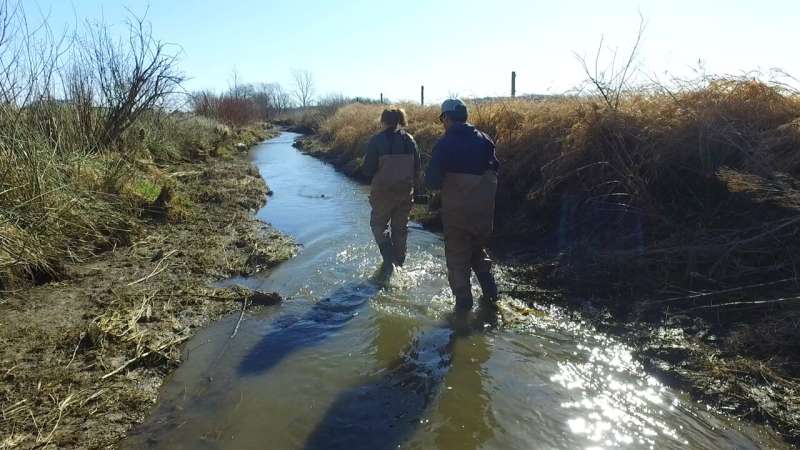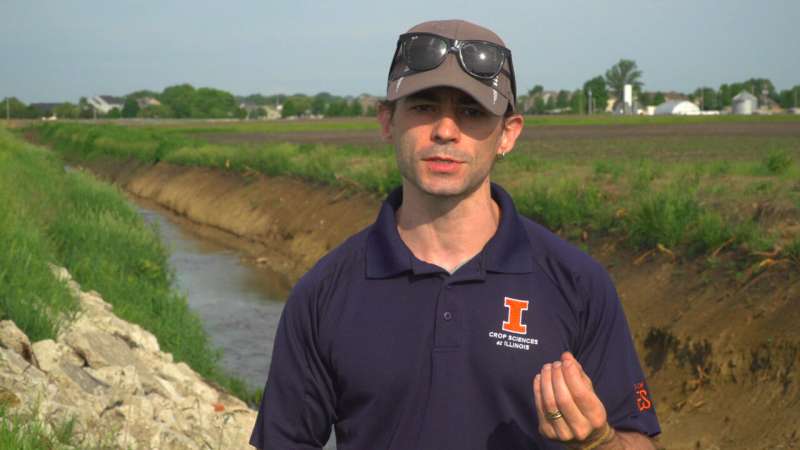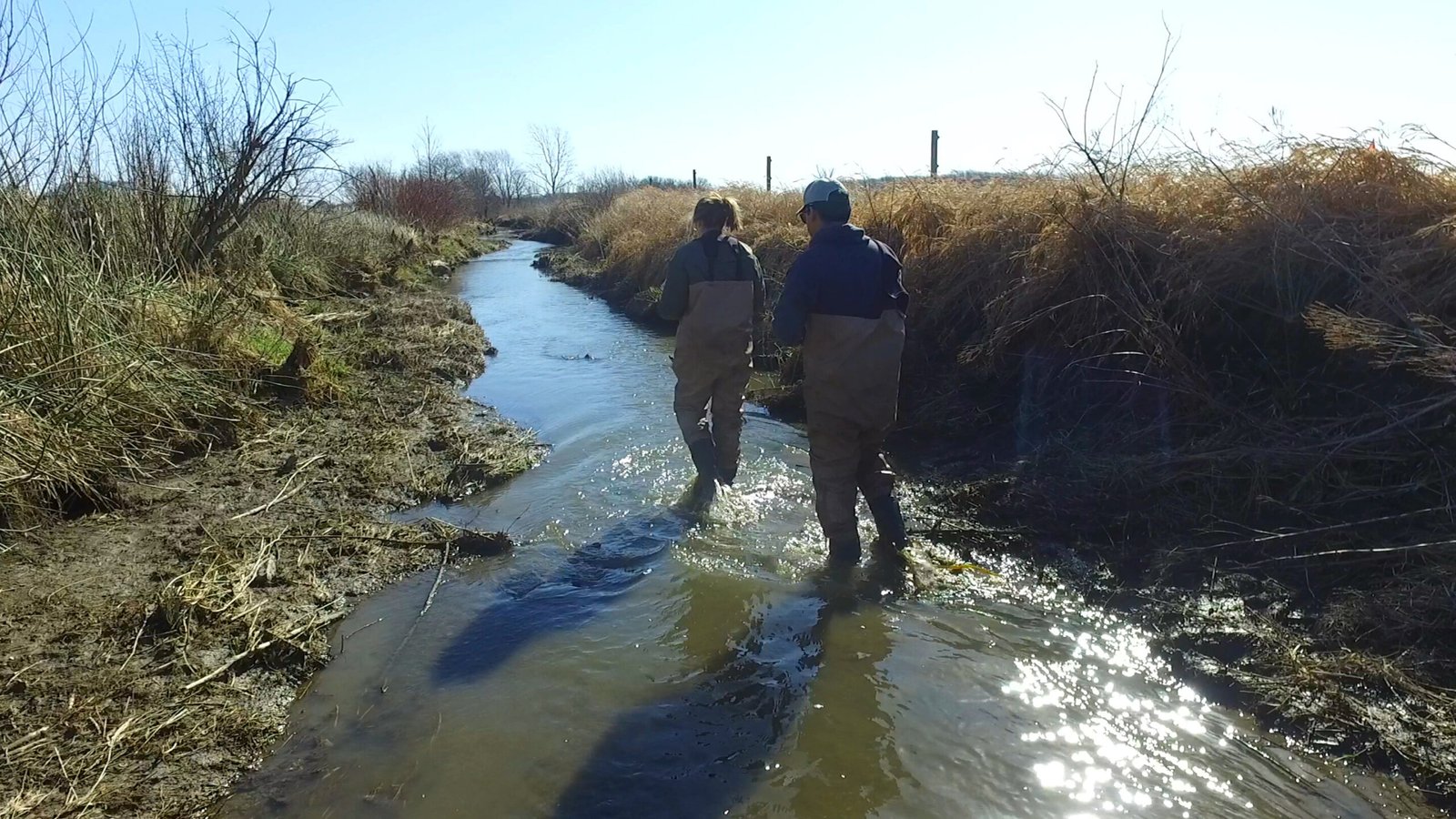
As the world tries to mitigate agriculture’s effect on the environment, much of the story can be found in soil, which stores and cycles nutrient elements of carbon, nitrogen, and phosphorus.
Biogeochemists such as Andrew Margenot, Associate Director of the Agroecosystem Sustainability Center at the University of Illinois at Urbana-Champaign, are set to find answers, but for Margenot and other biogeochemistry experts who specialize in studying phosphorus cycling, the challenge is first being able to accurately measure where phosphorus has accumulated in the fewer than 100 years since humans began to increase the amount of the nutrient element in the biosphere.
Margenot, an Associate Professor of Soil Science in the Department of Crop Sciences, and other phosphorus experts from around the world, recently published a position or synthesis piece (as opposed to a research study) in Global Change Biology, to lay a roadmap to understand phosphorus cycling in the Anthropocene: the new geological era ushered in by human activities.
Other investigators with the project include Leo Condron, a Professor of Biochemistry at Lincoln University in New Zealand; Genevieve Metson, an Associate Professor in the Department of Geography and Environment at the University of West Ontario; Philip Haygarth, a Professor at the Lancaster University Environment Centre in the United Kingdom; and Jordan Wade, Soil Health Assessment Lead at the Syngenta Group, headquartered in Basel, Switzerland; along with Ph.D. student Prince Agyeman from the Czech Republic and research scientist Shengnan Zhou and postdoctoral researcher Suwei Xu from the Margenot research group at Illinois.
“The goal is to look at all possible ways to try to measure legacy phosphorus. This is a comprehensive one-stop shopper overview of where it makes sense to measure and where it makes sense to not worry about. In the process, we identify the priorities and non-priorities and provide a unified vision of what we should do going forward,” said Margenot.
The position paper focuses on phosphorus in the “terrestrial aquatic continuum,” the interplay of water and soil that interact at varying scales of space and time.
“A big part of our paper was emphasizing uncertainty,” Margenot said. “This can be uncomfortable for policymakers because they have a need to make policy yesterday for tomorrow’s problems.”
It may take a century for legacy phosphorus already loaded into stream channels and built up in the soil to fully disseminate to the waterways, so identifying how much and where this residual phosphorus is located is an important need
“When it comes to legacy phosphorus that will impact water for the next 100 years or more, we don’t even know the basics of where to start. However, there has to be a way to navigate the uncertainty. We don’t want to be too brash, but we also cannot wait 50 years to determine what to do either,” clarified Margenot.
In making recommendations for future phosphorus use, researchers can measure how much was added to the soil and how much was exported by biomass removal (e.g., harvest) or loss (e.g., leaching or erosion). Calculating the balance (what went in, minus what came out of a “system” like a field, watershed or country) enables estimation of the quantity of residual phosphorus—a positive mass balance.

The position paper also provides several case studies of legacy phosphorus using the two oldest continuous agricultural test plots in the world, the Rothamsted Experiment in Harpenden, England, founded in 1843; and the University of Illinois Morrow Plots, founded in 1876. Among the discoveries was that the accumulated phosphorus is generally located in the top 12 inches of the soil, and is often in a different form than when it was added to the soil. This last part was a key finding of the paper.
“We typically add phosphorus in inorganic form as phosphate, which is readily soluble in water and thus may be at a high risk for loss,” explains Margenot.
“What we found is that even though we have a lot of phosphorus going on as phosphate, the amount that builds up doesn’t persist in soil in the soluble phosphate form. It transforms into forms associated with organic matter, iron, and calcium. So we can’t assume that the amount of phosphorus that was applied and not used (i.e., residual phosphorus), is there for the taking by the crop or potential loss to water.”
In addition to comprehensively evaluating the problem, the consortium made several recommendations.
1) Researchers need to be better at validating estimates. “Oftentimes we don’t measure the small input or the output amounts of phosphorus. Over time, those gaps in the measurements amplify uncertainty,” Margenot said.
2) Scientists often don’t have sufficient information to form decent estimates. The group suggests an initiative where the private sector (e.g., soil testing labs) could work with researchers to make use of existing datasets.
3) There must be a uniform method of measuring the data. “In a lot of cases, basic measurements basically haven’t been taken,” Margenot said. “We need to couple complementary methods that are individually not great, but in combination are quite strong. While it can be overwhelming to figure out where the phosphorus has built up over the last 70 years, I think the important thing is to identify where it matters for different reasons of agronomic utilization and water quality impairment.”
4) There must be an effort to discover the hot spots of legacy phosphorus so that resources could be prioritized to decrease the negative impacts of water quality. Margenot’s group is already doing that in Illinois. “We don’t need to map the entire state,” Margenot said. “We know where there is a priority watershed because the USGS is measuring this.”
The challenge, according to the paper, is to convince researchers and funders to allocate resources to provide data that will make a difference. “To get that last 5 percent of the data will cost you half of what it takes for the other 95% of the data,” Margenot noted.
The challenge for policymakers, according to Margenot, will be to explain that because the measurements of legacy phosphorus are estimates at this point, they should see the data as a living document. “The policies have to be plastic,” he said.
“The global phosphorus has been more perturbed by human activities than nitrogen,” Margenot noted. “We’ve about doubled the amount of nitrogen in circulation in the biosphere, but we have quadrupled it for phosphorus.”
More information:
Andrew J. Margenot et al, Missing phosphorus legacy of the Anthropocene: Quantifying residual phosphorus in the biosphere, Global Change Biology (2024). DOI: 10.1111/gcb.17376
Provided by
University of Illinois at Urbana-Champaign
Citation:
Biogeochemistry scientists from around the world publish position paper on tackling ‘hidden’ phosphorus (2024, September 11)
retrieved 11 September 2024
from https://phys.org/news/2024-09-biogeochemistry-scientists-world-publish-position.html
This document is subject to copyright. Apart from any fair dealing for the purpose of private study or research, no
part may be reproduced without the written permission. The content is provided for information purposes only.
